Are Flesh Flies Dangerous? This is the most common question asked frequently. Flesh flies, scientifically known as Sarcophagidae, are often misunderstood insects that raise many concerns due to their name and appearance. With their distinct red eyes, gray-striped thorax, and tendency to buzz around decaying organic matter, it’s no wonder that people frequently ask: Are flesh flies dangerous?
This article will explore everything you need to know about flesh flies, addressing common concerns, their life cycle, potential dangers, and effective ways to get rid of them.
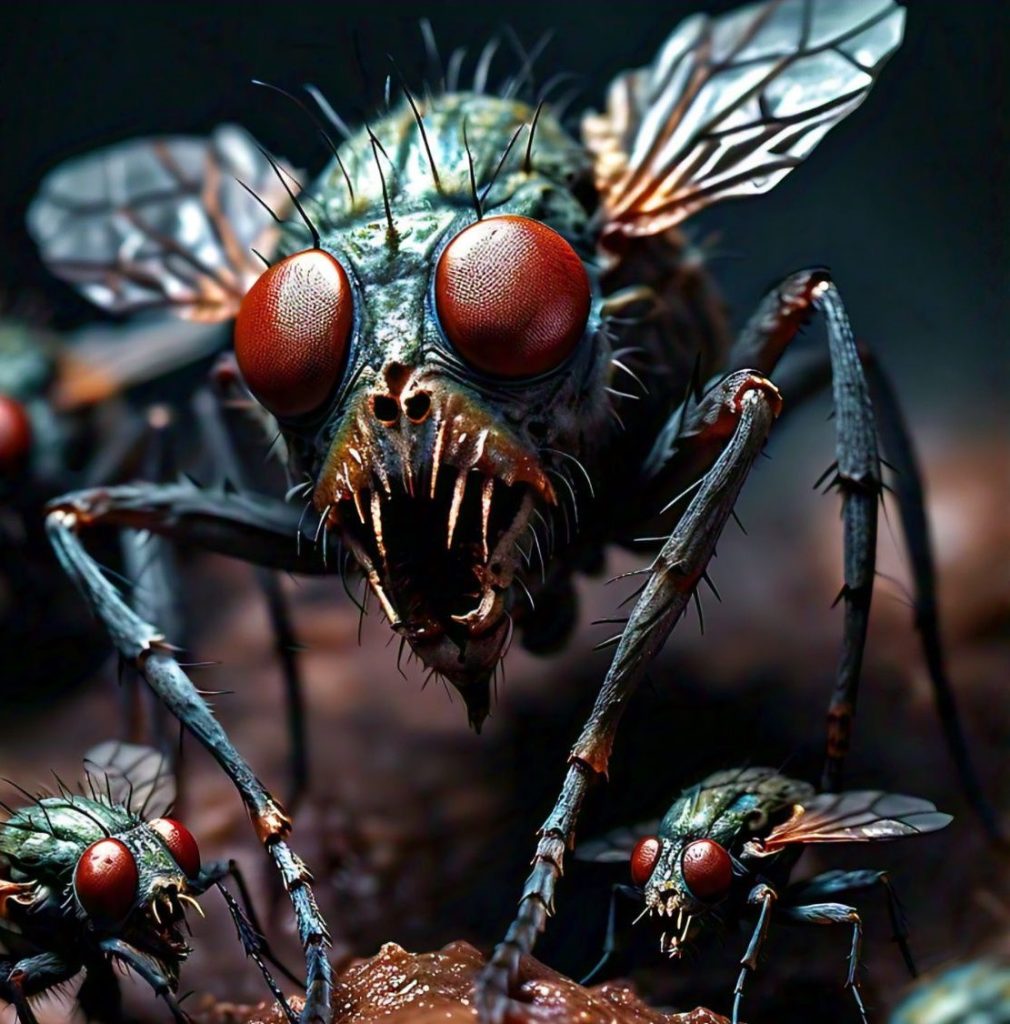
What Are Flesh Flies? Are Flesh Flies Dangerous?
Flesh flies are medium-sized insects that are often mistaken for house flies. They are easily identifiable by their grayish-black bodies adorned with three dark stripes on the top of their abdomen and their characteristic red eyes. These flies are named for their habit of laying eggs in decaying flesh, animal carcasses, open wounds, and other organic matter.
Are Flesh Flies Dangerous to Humans?
One of the most common questions about flesh flies is whether they pose a danger to humans. While flesh flies do not bite humans, they can still be hazardous in certain circumstances. The main concern with flesh flies is their potential to transmit diseases Are Flesh Flies Dangerous?
Flesh flies are attracted to decaying organic matter, including open wounds and exposed trash. When they come into contact with these materials, they can pick up harmful bacteria and other pathogens. If a flesh fly contaminates food or surfaces in your home, it could potentially lead to food poisoning or other illnesses.
Additionally, flesh fly larvae, also known as flesh fly maggots, can cause myiasis in humans and animals. Myiasis is an infection that occurs when the larvae infest living tissue. Although this condition is relatively rare, it can be serious if left untreated.
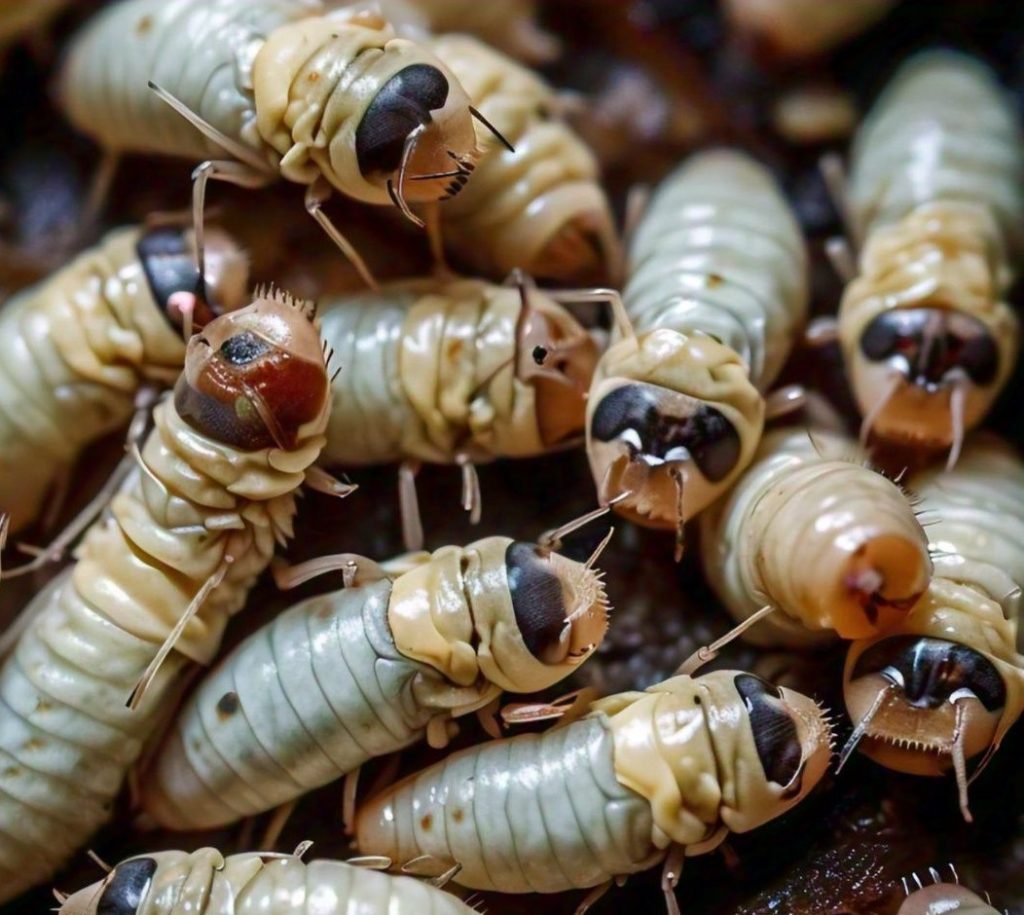
Are Flesh Flies Dangerous to Pets?
Just as with humans, flesh flies can pose a risk to pets, particularly if they have open wounds or sores. The larvae of flesh flies are known to infest these wounds, which can lead to severe infections and complications. Therefore, it’s crucial to ensure that any wounds on your pets are kept clean and covered to prevent infestation.
Are Flesh Flies Dangerous to Eat?
While it may seem unlikely, flesh flies can contaminate food, especially in unsanitary conditions so Are Flesh Flies Dangerous. If food is left uncovered and a flesh fly lands on it, there is a risk of contamination. Consuming food contaminated by flesh flies could lead to foodborne illnesses. It’s essential to maintain cleanliness in areas where food is prepared and stored to avoid this risk.
Flesh Fly Life Cycle
Understanding the life cycle of flesh flies is key to managing and preventing infestations Are Flesh Flies Dangerous. Flesh flies undergo complete metamorphosis, which includes four stages: egg, larva, pupa, and adult.
- Egg Stage: Flesh flies are unique in that they do not lay eggs in the traditional sense. Instead, female flesh flies deposit larvae directly onto decaying organic matter or open wounds. This behavior allows the larvae to immediately begin feeding, giving them a head start in their development.
- Larval Stage: The larvae, also known as maggots, feed on the decaying material where they were deposited. This stage lasts for several days, during which the larvae grow rapidly.
- Pupal Stage: After the larvae have completed their feeding, they enter the pupal stage, during which they develop into adults. This stage typically occurs in the soil or other protected environments.
- Adult Stage: Once the pupal stage is complete, the adult flesh fly emerges. Adults are most commonly seen during warm months and are often found near decaying organic matter, where they seek out places to deposit their larvae.
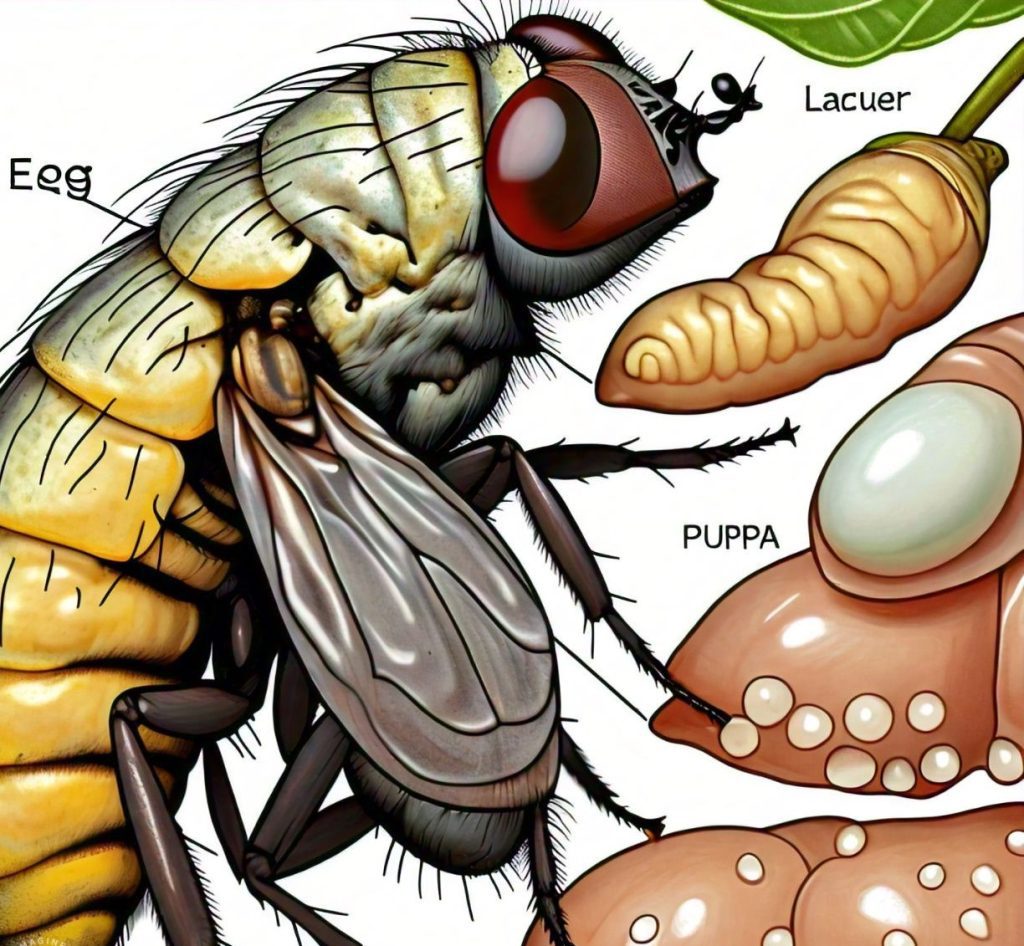
Do Flesh Flies Bite? Are Flesh Flies Dangerous?
A common misconception about flesh flies is that they bite. Unlike mosquitoes or other biting insects, flesh flies do not have mouthparts designed for biting. Instead, they feed on liquids, typically those found in decaying organic matter. However, the presence of flesh flies in your home or near food can still be concerning due to the potential for contamination.
How to Get Rid of Flesh Flies? Are Flesh Flies Dangerous?
If you’re dealing with a flesh fly infestation, it’s important to take action quickly to prevent the spread of these pests. Here are some effective strategies for getting rid of flesh flies:
- Remove Attractants: Flesh flies are attracted to decaying organic matter, including food scraps, animal waste, and open wounds. Ensure that all trash is securely stored, food is covered, and any wounds are properly treated and covered.
- Clean Up Decaying Matter: Flesh flies lay their larvae on decaying organic matter. Regularly clean up any animal waste, dead animals, or other sources of decay in and around your home.
- Use Fly Traps: Fly traps can be an effective way to reduce the number of flesh flies in your home. Sticky traps or baited traps can help catch adult flies before they have a chance to lay their larvae.
- Extermination Products: If the infestation is severe, you may need to use fly extermination products or consult with a pest control professional. Products such as insecticide sprays can be effective in reducing the population of flesh flies.
- Seal Entry Points: Flesh flies can enter your home through small cracks, open windows, or doors. Make sure to seal any entry points and install screens on windows and doors to prevent flies from getting inside.
Preventing Future Infestations
The best way to deal with flesh flies is to prevent them from becoming a problem in the first place. Here are some tips for keeping flesh flies at bay:
- Maintain Cleanliness: Regularly clean and sanitize areas where food is prepared or consumed. Dispose of trash promptly and securely to avoid attracting flies.
- Cover Food and Wounds: Ensure that all food is covered, especially when left out. If you or your pets have any open wounds, keep them clean and covered to prevent flesh flies from laying larvae.
- Regular Inspections: Periodically inspect your home and property for any signs of decaying organic matter or flesh fly activity. Address any issues immediately to prevent an infestation.
Conclusion
Flesh flies may not be as immediately dangerous as some other insects, but their potential to spread disease and infest wounds makes them a concern for homeowners. By understanding their behavior, life cycle, and the risks they pose, you can take proactive steps to protect yourself, your family, and your pets from these pests. With proper sanitation, timely intervention, and effective pest control strategies, you can minimize the risk of flesh flies becoming a problem in your home.
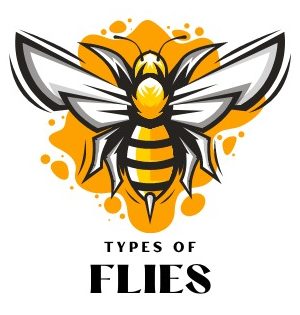
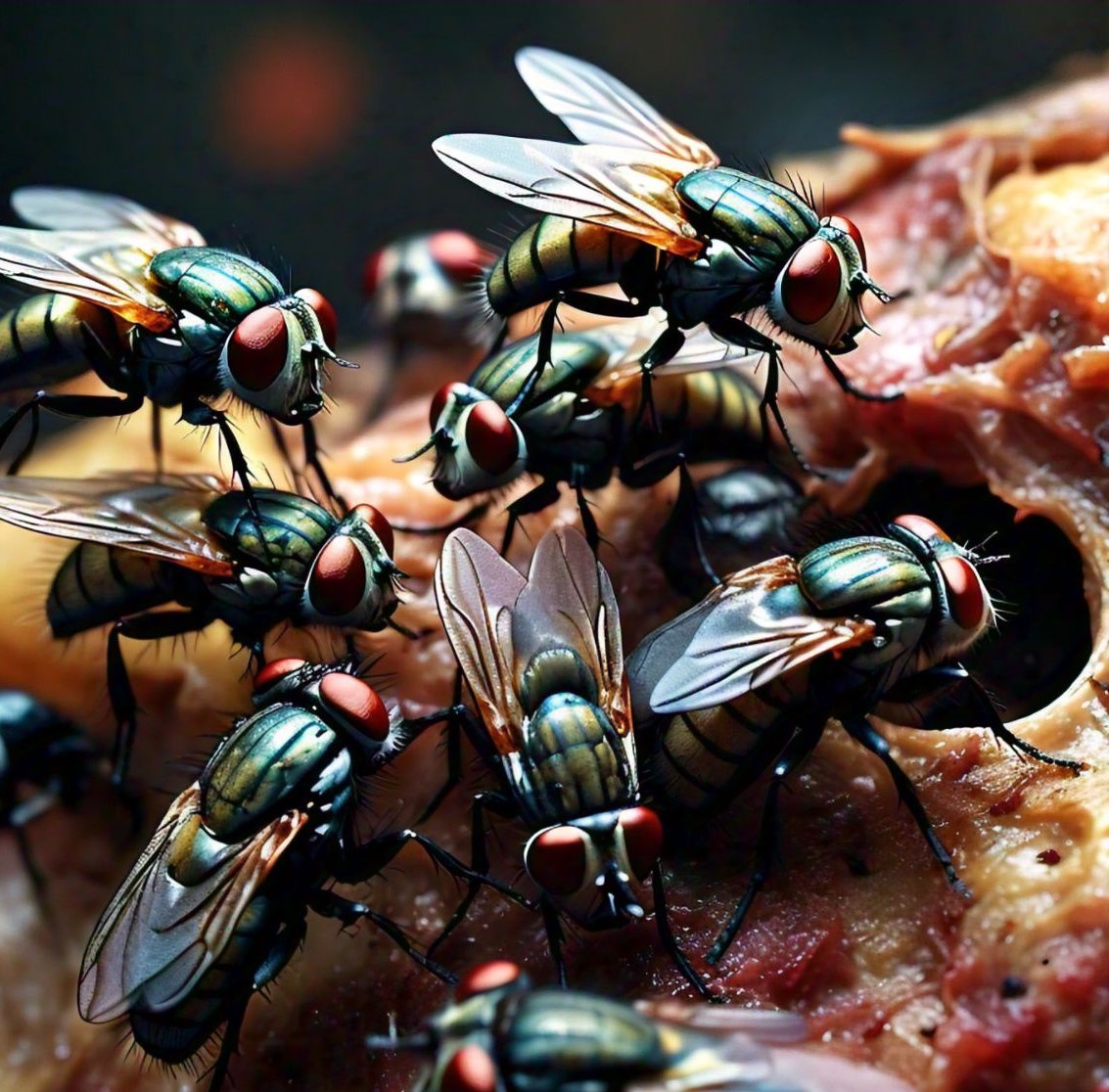
[…] Are Flies Most Attracted To? Understanding this can help in controlling fly populations, preventing infestations, and reducing their presence […]
[…] are known vectors of various pathogens. Understanding how flies and disease transmission occur can help in managing health risks associated with fly infestations. They can carry bacteria […]